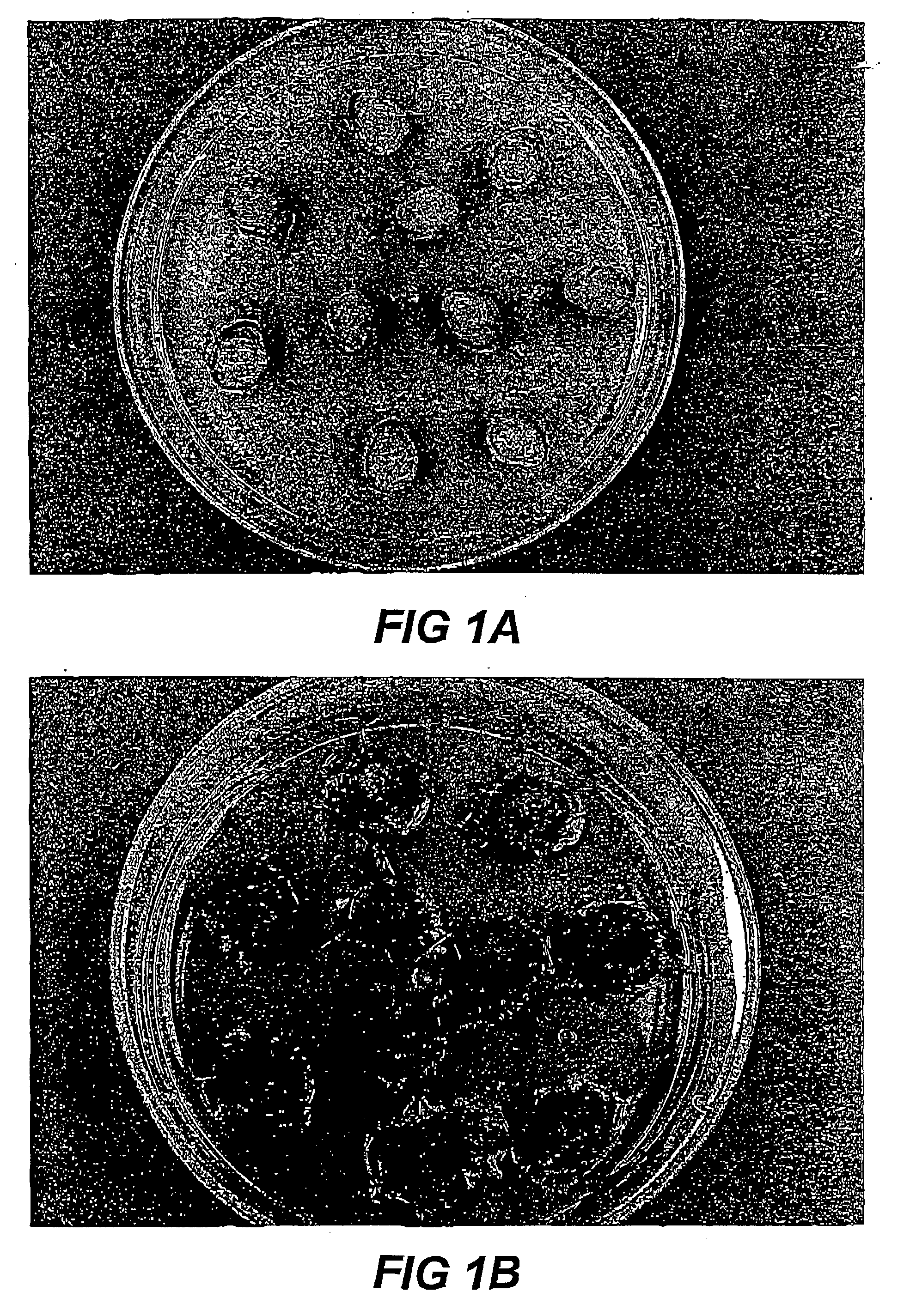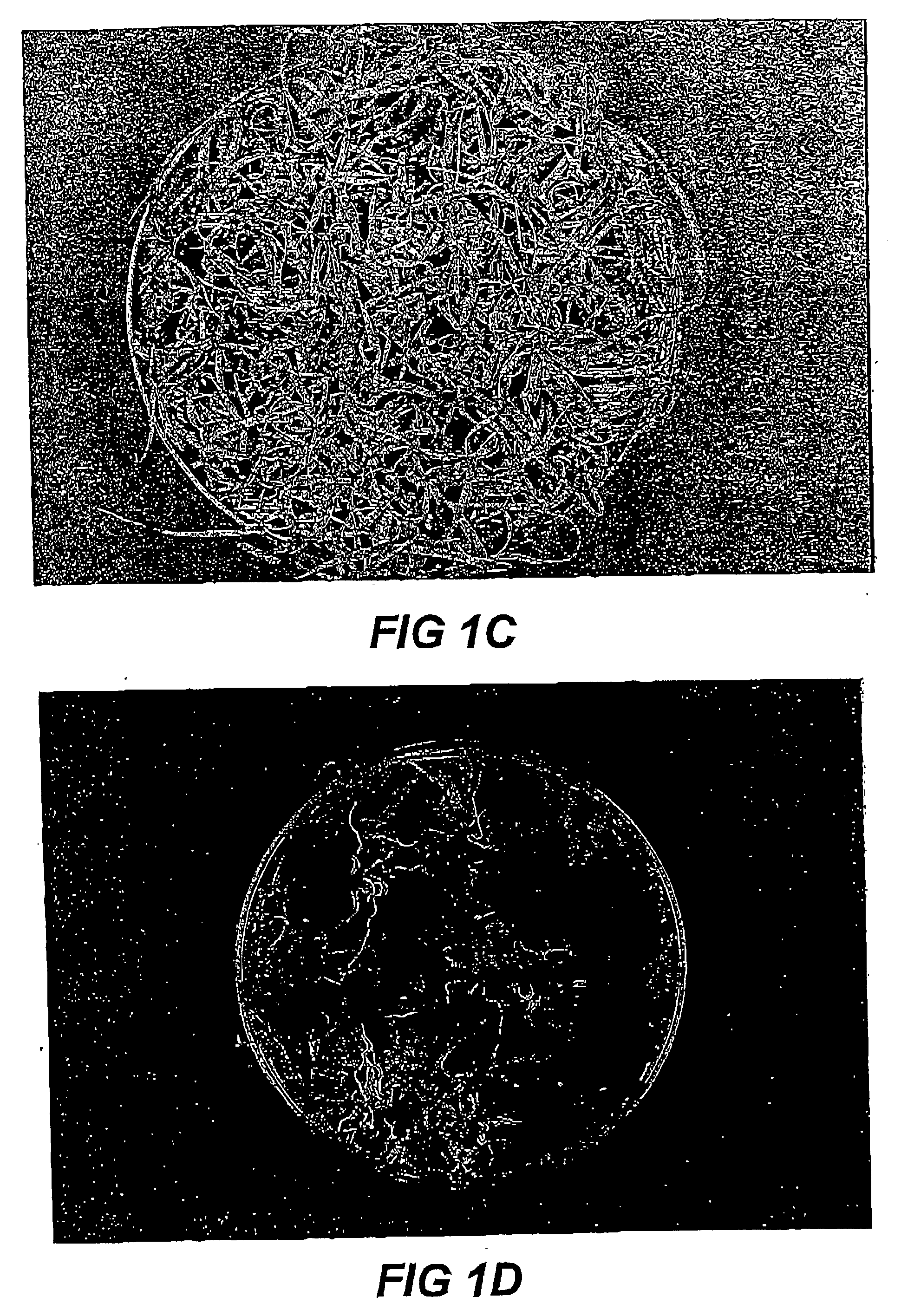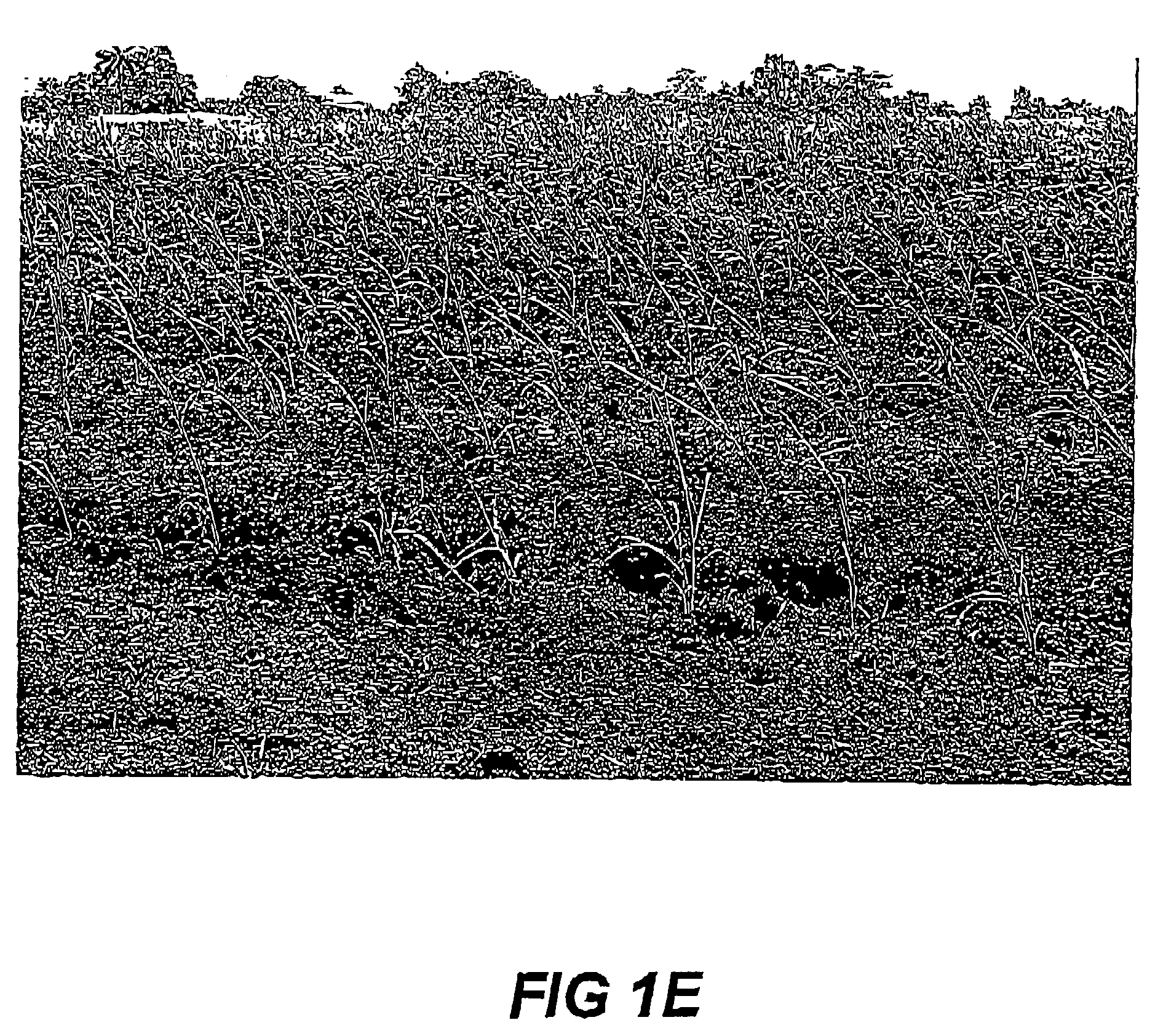Plant regeneration
a monocotyledonous plant and plant technology, applied in the field of plant regeneration, can solve the problems of reduced agronomic performance of regenerated plants, somaclonal variation, and somaclonal variation
- Summary
- Abstract
- Description
- Claims
- Application Information
AI Technical Summary
Problems solved by technology
Method used
Image
Examples
example 2
Influence of Explant Thickness and Orientation On Shoot Generation
[0111] Leaf spindle explants of sugarcane cultivar Q165 were cultured on solid MS medium / agar in the presence of 4 .mu.M BA and 10 .mu.M NAA. The explants differed in thickness (1-2 mm versus 5-6 mm), orientation of explant (basal surface contacting medium versus apical surface contacting medium) and duration of culture. Table 1 reports results after 5 weeks of culture, Table 2 after 6 weeks of culture, and Table 3 after 8 weeks of culture.
[0112] It was clear that a much higher percentage of explants having their basal surface not contacting the medium ("top down") produced shoots. This is particularly evident in Table 3, where the frequency of 1.0-2.0 mm explants producing shoots was up to 28-fold greater in the "top down" orientation. Also, the only explants which produced large numbers of shoots (>20 per explant) after 6 or 8 weeks of culture were those where the explant was oriented so that the basal surface did n...
example 3
Influence of Explant Sections On Shoot Generation In Cultivars Q165 and 90N876
[0116] From the preceding experimental data, it has been concluded that shoot growth occurs preferentially from the basal surface of explants rather than the apical surface. Furthermore, a dramatic increase in shoot regeneration frequency occured when the basal surface of the explant was oriented so as not to be in contact with the culture medium.
[0117] The data set forth in Tables 4-6 further demonstrate preferential shoot growth from thin sections taken from the basal and middle regions, compared to the apical regions, of sugarcane leaf spindle. Also, the concentrations of BA and NAA were varied in order to determine their influence upon shoot generation. In all cases, the basal surface of each section (whether a basal, middle or apical section) was not in contact with the culture medium. The percentage of explants producing shoots were scored, as were the number of shoots produced per explant. By both c...
example 4
Influence Of Different Cytokinin And Auxin Concentrations On Shoot Generation In Cultivar Q165
[0118] The effect of different concentrations of NAA, and either BA or KIN, was tested on shoot regeneration from 1-2 mm or 5-6 mm TS leaf explants from the Q165 sugarcane cultivar. The results are shown in Tables 7-10.
[0119] Generally, as is particularly evident from Tables 7, 8 and 10, 4 .mu.M BA or KIN were optimal at any given concentration of NAA. From the data in Tables 7-9, there was no noticeable trend in terms of NAA concentration on either the percentage of explants producing shoots, or the number of shoots produced per explant.
PUM
| Property | Measurement | Unit |
|---|---|---|
| thick | aaaaa | aaaaa |
| thick | aaaaa | aaaaa |
| concentration | aaaaa | aaaaa |
Abstract
Description
Claims
Application Information
 Login to View More
Login to View More - R&D
- Intellectual Property
- Life Sciences
- Materials
- Tech Scout
- Unparalleled Data Quality
- Higher Quality Content
- 60% Fewer Hallucinations
Browse by: Latest US Patents, China's latest patents, Technical Efficacy Thesaurus, Application Domain, Technology Topic, Popular Technical Reports.
© 2025 PatSnap. All rights reserved.Legal|Privacy policy|Modern Slavery Act Transparency Statement|Sitemap|About US| Contact US: help@patsnap.com



